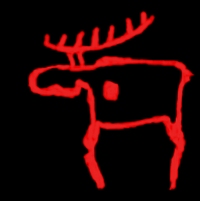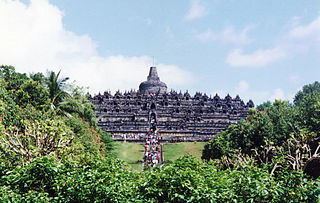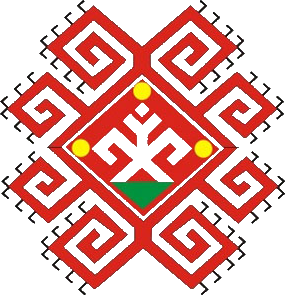
The demographics of Estonia in the 21st century result from historical trends over more than a thousand years, as with most European countries, but have been disproportionately influenced by events in the second half of the 20th century. The Soviet occupation (1944–1991), extensive immigration from Russia and other parts of the former USSR, and the eventual restoration of independence of Estonia, have all had a major effect on Estonia's current ethnic makeup.

Finno-Ugric is a traditional grouping of all languages in the Uralic language family except the Samoyedic languages. Its formerly commonly accepted status as a subfamily of Uralic is based on criteria formulated in the 19th century and is criticized by some contemporary linguists such as Tapani Salminen and Ante Aikio. The three most spoken Uralic languages, Hungarian, Finnish, and Estonian, are all included in Finno-Ugric.

Estonians or Estonian people are a Baltic Finnic ethnic group who speak the Estonian language. Their nation state is Estonia.

The Mari are a Finno-Ugric people in Eastern Europe, who have traditionally lived along the Volga and Kama rivers in Russia. Almost half of Maris today live in the Mari El republic, with significant populations in the Bashkortostan and Tatarstan republics. In the past, the Mari have also been known as the Cheremisa or the Cheremis people in Russian and the Çirmeş in Tatar.

Sacred groves or sacred woods are groves of trees that have special religious importance within a particular culture. Sacred groves feature in various cultures throughout the world.

Finnic paganism was the indigenous pagan religion in Finland, Karelia, Ingria and Estonia prior to Christianisation, the religion was native to the Baltic Finnic peoples. It was a polytheistic religion, worshipping a number of different deities. The principal god was the god of thunder and the sky, Ukko; other important gods included Jumo (Jumala), Ahti, and Tapio. Jumala was a sky god; today, the word "Jumala" refers to all gods in general. Ahti was a god of the sea, waters and fish. Tapio was the god of forests and hunting.

Setos are an indigenous Finnic peoples and linguistic minority that have historically lived in the borderlands between modern day Estonia and Russia. Setos have historically spoken the Seto language and been Orthodox Christians. The Seto language belongs to the Finnic group of the Uralic language family. Since the early 2000s, the Setos have sought greater recognition, rather than having their language considered a dialect of Estonian. Eastern Orthodox Christianity, with influences from local folk religions is widely practiced by the Seto peoples.

Modern Finnish paganism, also known as Finnish neopaganism or the Finnish native faith, is the contemporary revival of Finnish paganism, the pre-Christian polytheistic ethnic religion of the Finns. A precursor movement was the Ukonusko of the early 20th century. The main problem in the revival of Finnish paganism is the nature of pre-Christian Finnish culture, which relied on oral tradition which may be subject to change over time. The primary sources concerning Finnish native culture are written by latter-era Christians.

Religion in Russia is diverse, with Orthodox Christianity being the most widely professed faith, but with significant minorities of non-religious people and adherents of other faiths. A 1997 law on religion recognises the right to freedom of conscience and creed to all the citizenry, the spiritual contribution of Orthodox Christianity to the history of Russia, and respect to "Christianity, Islam, Buddhism, Judaism and other religions and creeds which constitute an inseparable part of the historical heritage of Russia's peoples", including ethnic religions or paganism, either preserved, or revived. According to the law, any religious organisation may be recognised as "traditional", if it was already in existence before 1982, and each newly founded religious group has to provide its credentials and re-register yearly for fifteen years, and, in the meantime until eventual recognition, stay without rights.

Kejawèn, Kejawan, or Kajawan is one of the two Javanism folk religious denominations, alongwith Kapitayan. In Kejawèn Javanism, the form of spiritual polytheistic worship is apparent.

Religion has been a major influence on the societies, cultures, traditions, philosophies, artistic expressions and laws within present-day Europe. The largest religion in Europe is Christianity. However, irreligion and practical secularisation are also prominent in some countries. In Southeastern Europe, three countries have Muslim majorities, with Christianity being the second-largest religion in those countries. Ancient European religions included veneration for deities such as Zeus. Modern revival movements of these religions include Heathenism, Rodnovery, Romuva, Druidry, Wicca, and others. Smaller religions include Indian religions, Judaism, and some East Asian religions, which are found in their largest groups in Britain, France, and Kalmykia.

The Mari religion, also known as Mari paganism, is the ethnic religion of the Mari people, a Volga Finnic ethnic group based in the republic of Mari El, in Russia. The religion has undergone changes over time, particularly under the influence of neighbouring monotheisms. In the last few decades, while keeping its traditional features in the countryside, an organised Neopagan-kind revival has taken place.

The Hungarian Native Faith, also termed Hungarian Neopaganism, is a modern Pagan new religious movement aimed at representing an ethnic religion of the Hungarians, inspired by taltosism, ancient mythology and later folklore. The Hungarian Native Faith movement has roots in 18th- and 19th-century Enlightenment and Romantic elaborations, and early-20th-century ethnology. The construction of a national Hungarian religion was endorsed in interwar Turanist circles (1930s–1940s), and, eventually, Hungarian Native Faith movements blossomed in Hungary after the fall of the Soviet Union.

Estonia, historically a Lutheran Christian nation, is today one of the least religious countries in the world in terms of declared attitudes, with only 14 percent of the population declaring religion to be an important part of their daily life. This is thought to largely be a result of the Soviet occupation of Estonia in 1940, prior to which Estonia had a large Christian majority.

Estonia, officially the Republic of Estonia, is a country by the Baltic Sea in Northern Europe. It is bordered to the north by the Gulf of Finland across from Finland, to the west by the sea across from Sweden, to the south by Latvia, and to the east by Lake Peipus and Russia. The territory of Estonia consists of the mainland, the larger islands of Saaremaa and Hiiumaa, and over 2,300 other islands and islets on the eastern coast of the Baltic Sea, covering a total area of 45,335 square kilometres (17,504 sq mi). Tallinn, the capital city, and Tartu are the two largest urban areas of the country. The Estonian language is the indigenous and official language of Estonia, and it is the first language of the majority of the country's population of 1.4 million.

Estonian neopaganism, or the Estonian native faith, spans various contemporary revivals of the indigenous religion of the Estonian people, adapted from their local myths and culture.
Abkhaz neopaganism, or the Abkhaz native religion, is the contemporary re-emergence of the ethnic religion of the Abkhaz people in unrecognized Abkhazia, a revitalisation which started in the 1980s. The most important holy sites of the religion are the Seven Shrines of Abkhazia, each one having its own priestly clan, where rituals and prayers began to be restored in the 1990s.
Uralic neopaganism encompasses contemporary movements which have been reviving or revitalising the ethnic religions of the various peoples who speak Uralic languages. The movement has taken place since the 1980s and 1990s, after the collapse of the Soviet Union and alongside the ethnonational and cultural reawakening of the Finnic peoples of Russia, the Estonians and the Finns. In fact, Neopagan movements in Finland and Estonia have much older roots, dating from the early 20th century.
















